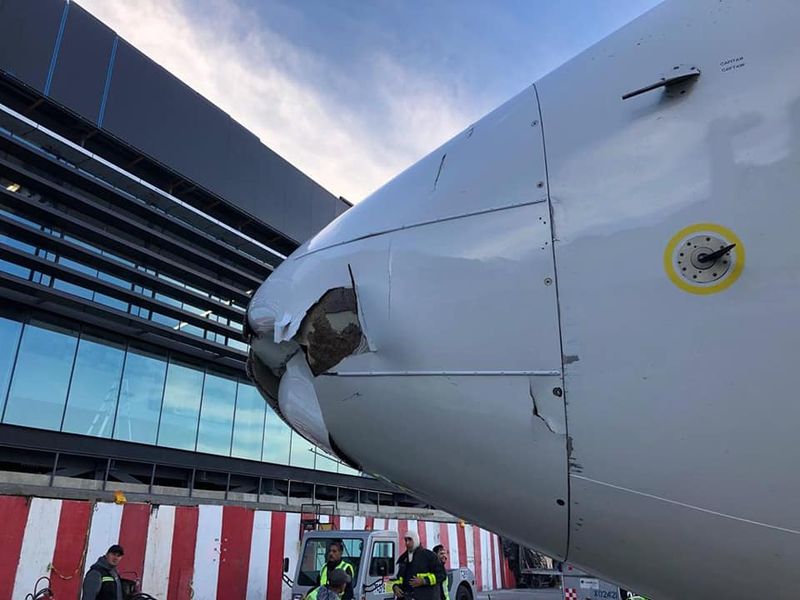
The damaged nose of a Boeing 737. (AFAC Aviacao)
An unexpected bang greeted an Aeromexico pilot who was preparing to land his 737 last December. With no blood or feathers to indicate a bird’s handiwork, it looked like maybe a drone had caved in the radome at the narrow-body’s nose cone.
Or maybe not.
A Boeing investigation — completed at the behest of the National Transportation Safety Board (NTSB) — cleared the hypothetical UAS of any wrongdoing. Engineers determined that no object was the culprit, but that damage was likely the result of pressure differentials during descent.
Dronemaker DJI sees a pattern forming: drones getting blamed off-the-bat for collisions and near-misses — and enduring the bad press that comes with resulting headlines — only to later be exonerated.
“People are afraid of hitting drones with planes, but guess what — it hasn’t happened,” said Adam Lisberg, DJI’s corporate communications director for North America, noting that the NTSB hasn’t conclusively found a single such incident. Most reported sightings collected mentioned by the FAA or U.K.’s Airprox Board are “useless, inaccurate or worse,” he said.
DJI has released a report detailing the company’s vision for safe skies, in which it collects some dozen baseless accounts in recent years of drones allegedly causing mayhem. At least seven, according to DJI, have entailed a drone being blamed for a collision only to later be cleared by investigating bodies. Incidents caused by birds, bats, balloons and, in one case, a plastic bag have all been initially chalked up to drone misuse.
This is a big deal, the company says, because those false reports stick in people’s minds and shape public perception.
“If you don’t fly drones regularly, just see news headlines, you might fear what would happen if one of those hit an airplane,” Lisberg said. However, that’s a much smaller concern than the interplay between drones and helicopters, where there have been verifiable collisions and near-misses.
That’s where DJI has put its development money and what the company is advocating for, according to Lisberg.
“It would be a real mistake for regulators, drone manufacturers and others to build their safety policies around reported incidents that turn out not to be true,” he said.
While he noted that jokes abound that a commercial pilot will call something they see a drone “whether it has feathers or not,” Lisberg said he believes everyone is acting in good faith.
“I can certainly see how you would make that mistake,” he said. “In an environment where airline pilots are told there’s this new danger called drones, it’s not surprising that people would be more likely to think drone than bird.”
That said, he called the idea of coming across a drone — and identifying it — at 14,000 feet “almost ludicrous.”
In DJI’s view, pervasive discomfort with drones mimics the introduction of other disruptive technologies. Over time, people will get used to them as a part of everyday life, but in the meantime, the company sees it as important to set the record straight on what legitimate concerns are and what is overblown.
“As the years have gone by,” Lisberg said. “There have been some people who have done stupid things with drones, but it turns out to be a pretty rare occurrence.”